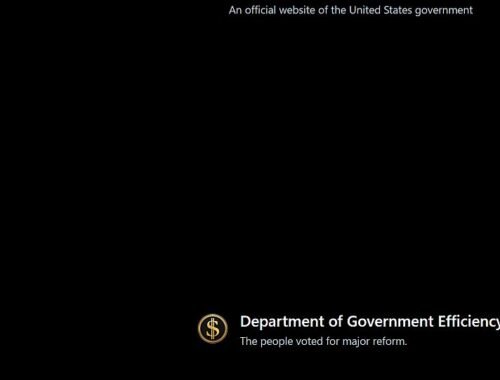
Ethics, Morality, and Virtue: Relative vs. Absolute Meaning
Then they said, “Come, let us build ourselves a city, with a tower that reaches to the heavens, so that we may make a name for ourselves; otherwise we will be scattered over the face of the whole earth.” Genesis 11:4
“Then the queen began to lament and to weep, so that the little man had pity upon her. "I will give you three days," said he, "and if at the end of that time you cannot tell my name, you must give up the child to me.” Rumpelstiltskin
I have written several blog posts about virtue recently. The relationship between ethics, morality, and virtue is complex. I suspect that many of us conflate the three terms together and muddy the differences. But as I have said repeatedly, words matter, and we should use precise terms precisely. But what happens when an important term is not as precise as many of us think?
A mundane experience I had recently helped to illustrate the point. My wife and stopped at a rest stop and got a pretzel at Auntie Anne. A woman asked for a small drink. The attendant said their small drink was a medium. They had medium and large. Funny, I read a passage in a novel as I was thinking about the topic today. A customer asked for a small coffee and the attendant told her they had small and medium.
So, what is a medium? Barring an accepted amount of drink in a cup for small, medium, and large is relative and fluid description. One restaurant can call a drink a medium and another can call the same sized drink a small. Now, in the grander scheme, this is a tempest in a teapot.
Or is it?
I suspect there is a bit of confusion around the terms ethics, morality, and virtue. Dictionary.com says morals are the base for ethics. Verywell.com builds on dictionary.com and says ethics refer to groups and morals refer to individuals. They are so closely related to each other they are often confused. I’ve taken three ethics courses in undergraduate and graduate school and none of them really made this distinction.
Let us set virtue aside for a moment and focus on ethics and morality. A person may be part of a group with established ethics, but with a different morality. Consider a civil rights activist in the 1950s. Helping blacks may have been a moral action for an individual, but it violated the country-wide group ethics. Counter activists even killed some over their actions.
Now let’s move through the 1960s, 70s, 80s, 90s, and on up to today. The civil rights activists were clever. While the right went about building companies, the economy, and making money, the civil rights took over education and government. With education, they taught children their agenda and version of the truth. With government, they controlled regulation, enforcement, and budgets.
He who controls the name of things controls the power. This concept goes way back in antiquity. It goes well beyond what we in our day and age normally associate with a name. The shem (Hebrew for name) is the essence of a thing’s power and existence. That is why the Nephilim were the people of the Shem (Genesis 6:4) and why the Tower of Babel was built to obtain Shem (Genesis 11:4). It is why Isis tricked Ra into divulging his secret name and theme that Inanna obtained from Enki. We also see it in fairy tales, such as Rumpelstiltskin. If you know an entity’s name, you have power over the entity.
The civil rights advocates understand this concept. When the courts struck down one of their programs, they changed name and did what they wanted; what they thought was ethical. Affirmative action is a good example. For those surprised with the court’s ruling striking down race-based admissions, they need to go back to 1978 and the Regents of the University of California v Bakke. The civil rights advocates changed the term, eventually leading to Diversity, then Diversity, Inclusion, and Equity. The Biden administration all but said they will change names again and continue the program.
Now, civil rights activists call themselves social justice advocates or even warriors. Along the way, they changed their ethics to aggressively seek what they term justice. With their control of education and the media, they propagated this ethic throughout American society. Using their control of the bureaucracy, they enabled this new ethic with regulations, enforcement, and social welfare programs.
These programs legalize discrimination in the name of social justice and righting past wrongs. We seem to have forgotten something many of our mothers tried to teach us: two wrongs don’t make a right.
And this where virtue comes into play. Socrates and Aristotle perhaps first defined virtue ethics. But there are a lot of different concepts of virtue. I like two the best: Do the right thing without hope of reward or punishment and Immanuel Kant’s Categorical Imperative. He had three versions, but the one that really resonates is that people are ends in themselves and not means to an end.
Doing the right thing can be subjective given group ethics. But I suspect there is a higher definition of “the right thing” and Kant’s Categorical Imperative is the key.
When we look at the opening figure, we see the scales of justice and a compass rose. We also see an angel’s wing on one side, a demon’s wing on the other. Different groups with different ethics may see actions as virtuous or demonic. Some objective standard is required and I suspect that is Kant.
When we look at the social justice movement, I think we see clear violations of the Categorical Imperative. Discriminating against one group as we see happening in the social justice movement just makes the problem worse. Likewise, the solutions they seem to propagate make the situation worse, as I’ve discussed elsewhere. They change names and meanings to further their objectives. Racism and discrimination are now almost meaningless terms, much like medium and large at Aunt Annies.
Those that control names are the primary builders of Babel. We need critical thinking and to understand cognitive biases to activate the scales of justice and use the compass rose to penetrate the babel.






One Comment
Pingback: